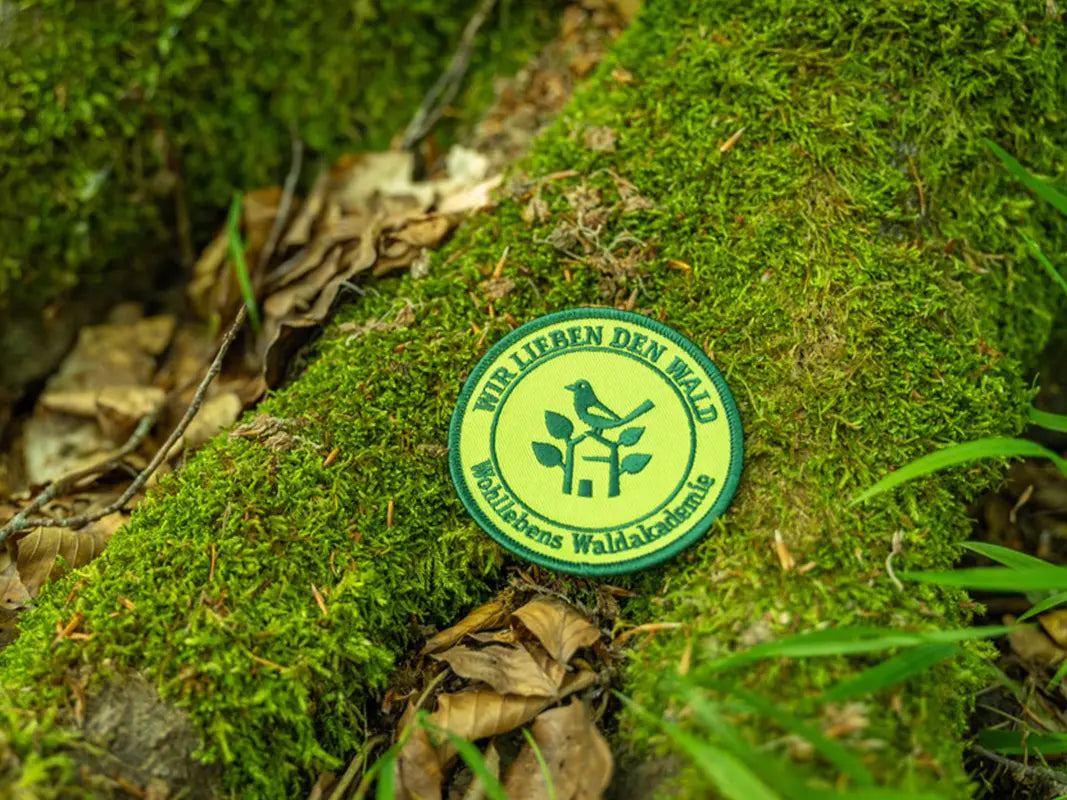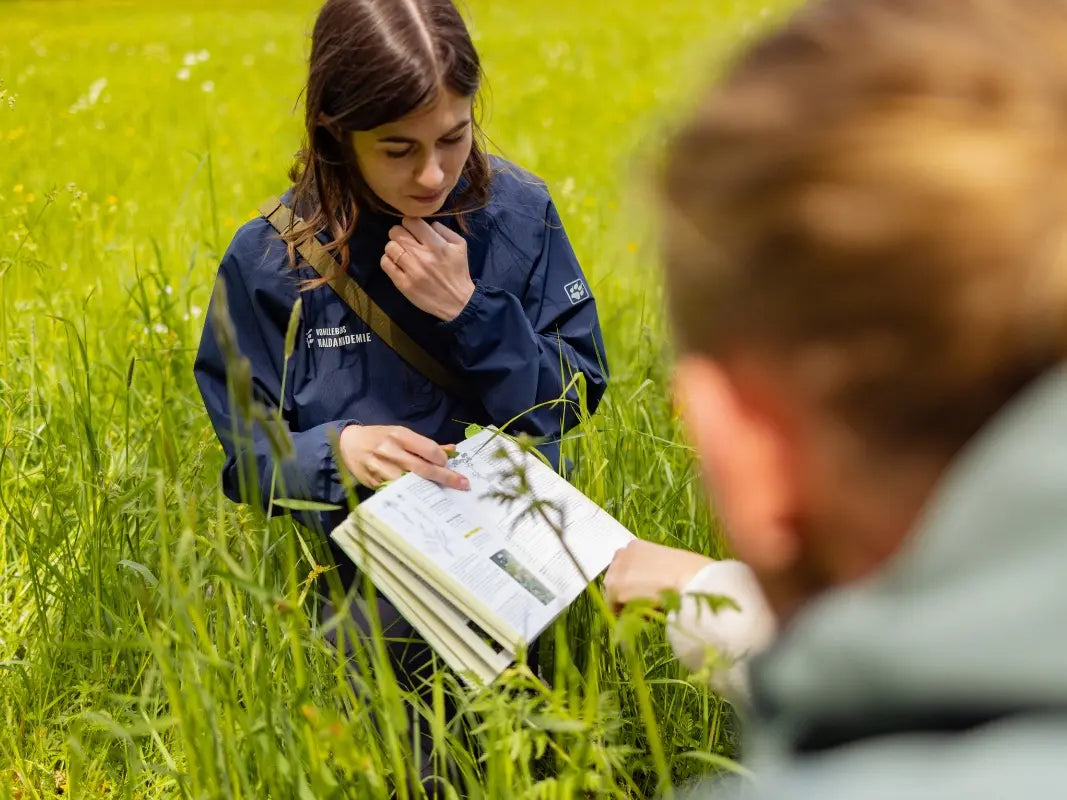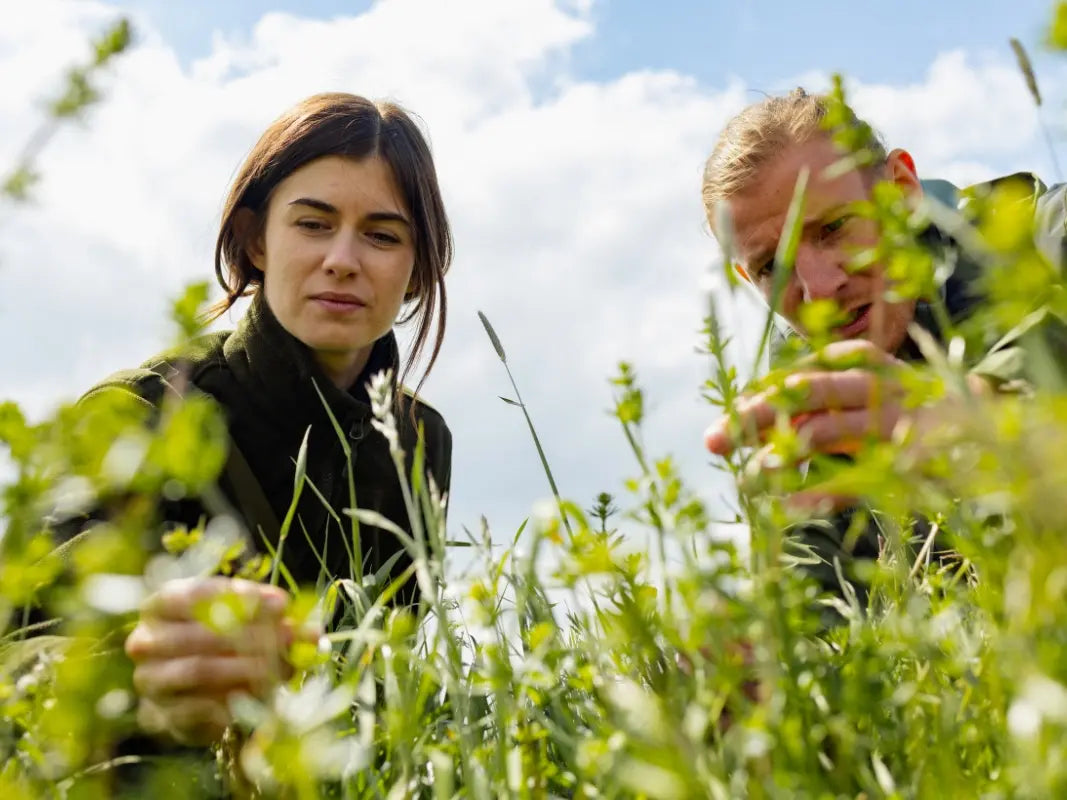Native herbs: Discover and taste the power of wild plants
Herbal hike to identify wild herbs and enjoy them with all your senses
In our herb walks and seminars, experienced experts will personally show you how to identify edible wild plants , collect them correctly, and dry them. Look forward to practical tips, creative recipes, and inspiring moments in the heart of nature.
2 products
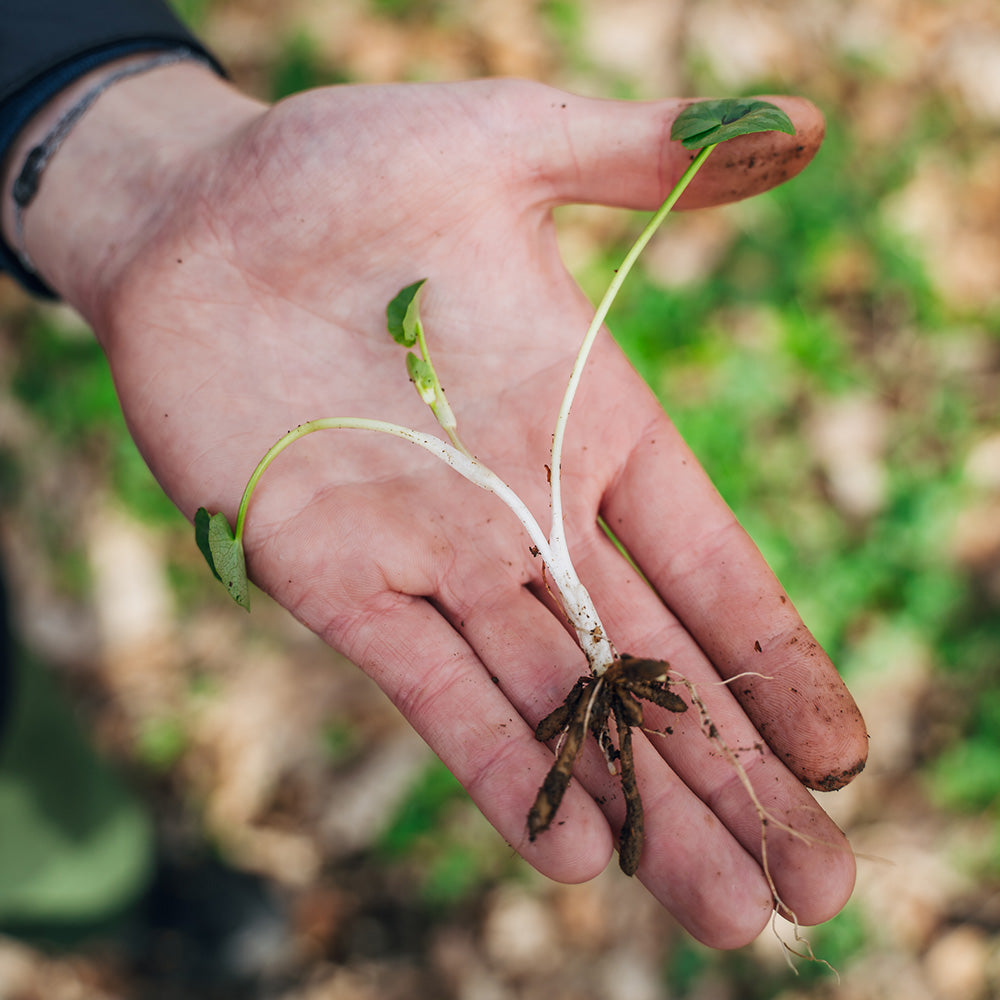
Identifying wild herbs correctly: Discover the diversity of native flora
Learning to identify wild herbs opens up a culinary and health treasure trove right on your doorstep. Unlike traditional medicinal plants, wild herbs are especially valued for their flavor and as a delicious addition to the kitchen.
Edible wild herbs such as dandelion, wild garlic and ground elder are popular and enrich your diet with many valuable ingredients and a wonderful taste.
Caution is still advised: There's a risk of confusion with poisonous plants. However, with the right guidance and a little practice, you can learn to reliably identify edible wild herbs and clearly distinguish them from inedible species.
When collecting herbs, it's best to harvest away from busy roads or polluted areas. Herbs in forests and pristine meadows are particularly valuable and recommended.
From the forest to the kitchen – How herbs taste best
Herbs develop their full flavor potential immediately after picking. Whether in soups, dips, or smoothies – freshly gathered wild herbs lend dishes a distinctive aroma and enhance your meals both culinary and healthily. For a particularly intense flavor experience, it is recommended to harvest herbs shortly before use.
Creative wild herb salads: rediscover edible wild herbs
A crunchy wild herb salad adds variety to your plate and is a healthy addition to your meals. Edible wild herbs like dandelions, aromatic wild garlic, or spicy ground elder create exciting flavor combinations. Complement your salad with nuts, berries, or high-quality oils – wild herbs taste even better!
Drying herbs: Use natural flavors all year round
Want to preserve the aroma of herbs? Then consider drying your collected herbs. Dried herbs add an aromatic touch to dishes even when they're out of season and can be stored space-efficiently. They're a great way to enjoy the power of herbs year-round.
Our tip: You can easily make your own aromatic herbal salt using dried herbs. It keeps well, enhances many dishes, and makes a wonderful personal culinary gift.
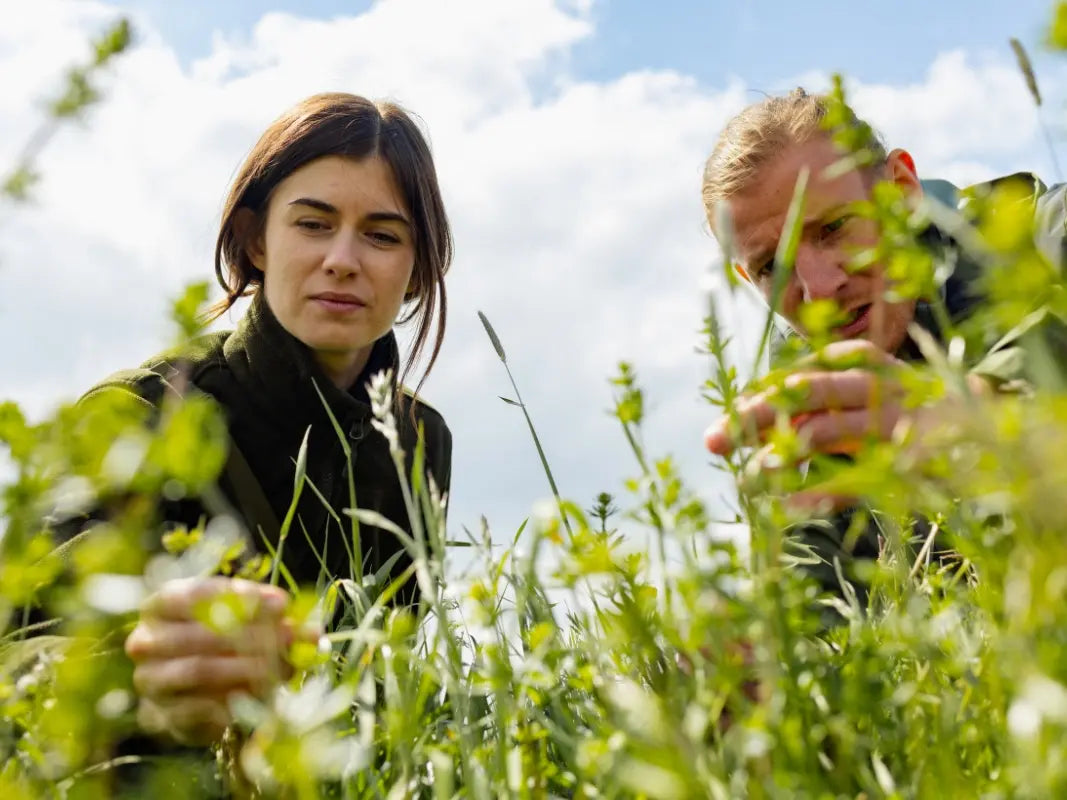
Herbal hike in the Eifel – learn knowledge practically
A herb hike offers you more than just fresh air and exercise in nature: In one of our herb hike courses , you will learn from experienced experts how to safely identify edible plants and collect them correctly.
Looking for a herb walk in the Eifel ? Our events in Wershofen, such as the evening herb walk or the comprehensive 3-day wild herb course , let you experience the diversity of local wild herbs with all your senses.
Small plants, big impact – the healthy ingredients of wild herbs
Here you will learn about the valuable nutrients found in wild herbs and how you can easily use them for yourself.
Leaves and flowers: vitamins directly from nature
Small, green, and surprisingly powerful—wild herbs are packed with healthy nutrients! Just a handful of fresh herbs provides you with valuable vitamins and minerals directly from the leaves and flowers. These include:
- Vitamin C (in dandelion, sorrel and chickweed) – strengthens your immune system.
- Iron (in nettle and ground elder) – supports your blood formation.
- Essential oils (in wild garlic and ground ivy) – have antibacterial and digestive effects.
- Potassium (in daisies and ribwort plantain) – regulates your metabolism.
- Calcium (in watercress and dandelion) – strengthens bones and teeth.
- Vitamin A (in nettle and chickweed) – improves your eyesight.
- Magnesium (in yarrow and ribwort plantain) – important for muscles and nerves.
Wild herbs are therefore the most natural and delicious food supplement you can treat yourself to.
Power packs along the way – Which wild herbs are particularly valuable?
Edible wild herbs like nettle, dandelion, and wild garlic are true nutritional heroes. Nettle provides iron, dandelion is rich in vitamin C, and wild garlic boasts essential oils. These wild herbs give your diet an extra kick of freshness.
Healthy cooking made easy – How to use edible wild herbs cleverly
Edible wild herbs can be incorporated into your diet in incredibly versatile ways. Even a small handful of freshly picked herbs will enhance your breakfast bread, soups, and salads enormously. Finely chopped into herb curd or creamed into homemade herb butter, wild herbs unfold their intense flavor particularly well.
Smoothies and freshly squeezed juices also benefit enormously from wild herbs like nettle, wild garlic, or chickweed, both in terms of flavor and health. Be inspired by the diversity of wild herbs and discover new, surprisingly delicious creations.
Your start on your herbal adventure – learn to enjoy naturally with Wohlleben’s Forest Academy!
Start your herb adventure now: Sign up for one of our popular herb walks and learn from experts how to identify edible wild herbs , collect them , and prepare them deliciously. Make nature a part of your everyday life – natural, healthy, and enjoyable!
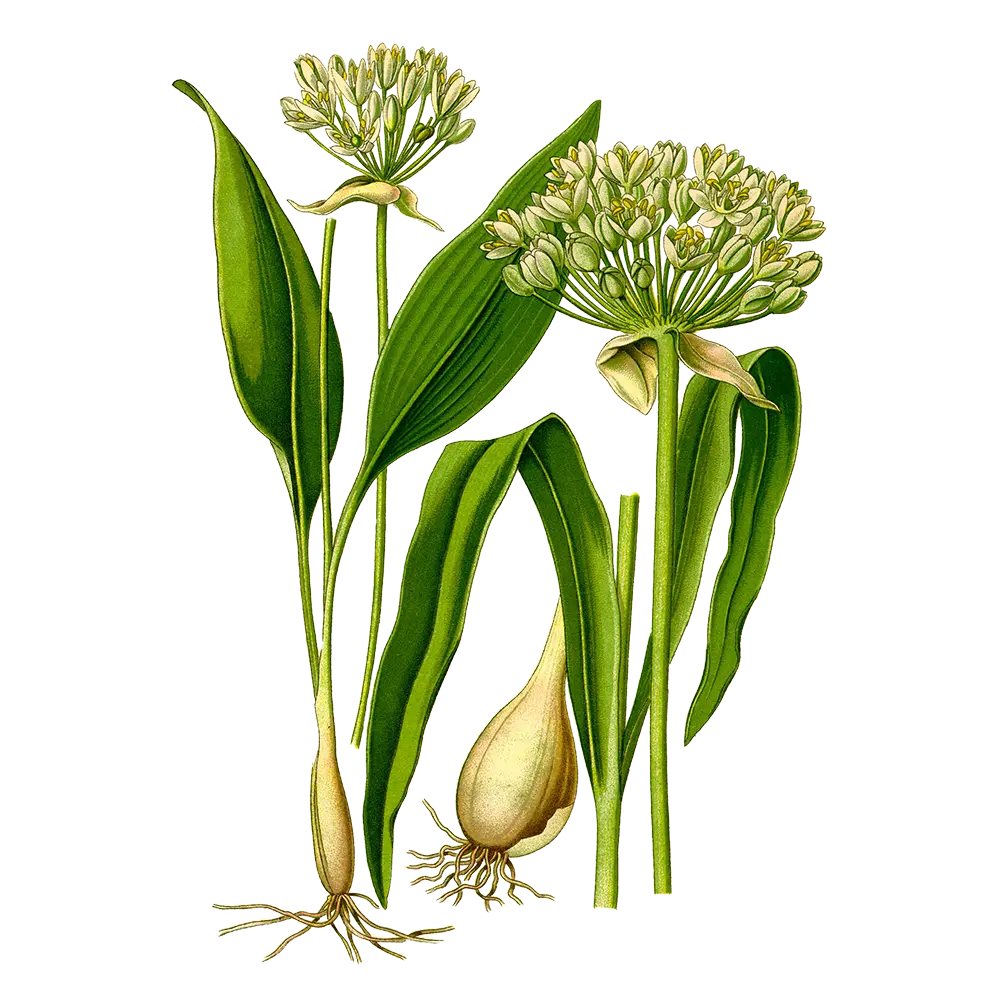
Herbal knowledge in 15 seconds
🌱 Herbs or medicinal plants? – Many wild herbs like dandelion or nettle not only taste delicious but also have healing properties.
🧄 Beware of doppelgangers! – Edible herbs like wild garlic have poisonous doppelgangers, such as lily of the valley.
🥗 More than just a spice – wild herbs are real vitamin bombs that are fresher and more nutritious than salad from the supermarket.
🍃 Store in a dry place? – It's best to dry herbs upside down and store them airtight to preserve their aroma for a long time.
📅 Best time to gather? – Spring and early summer offer the most aromatic herbs, but some wild herbs also regrow in the fall.

Jan Kaufmann – herbal expert at the Forest Academy
"Wild herbs are the forgotten treasures right on our doorstep. They provide us with delicious flavor, health, and an intense experience of nature. Those who know and use herbs bring a piece of pristine nature back into their everyday lives for free."
FAQ – Frequently asked questions about wild herbs
Here you will find answers to the most important questions about collecting, identifying and using wild herbs.
Are herbs from the forest safe to eat?
No, not all herbs in the forest are safe to eat, as many edible wild herbs have poisonous counterparts – for example, you can easily mistake wild garlic for the poisonous leaves of lily of the valley . Therefore, only collect herbs that you can reliably identify. A herb seminar will help you reliably distinguish edible from dangerous plants.
When and how should I harvest herbs?
When collecting herbs, it's best to harvest in the morning or early evening, as the herbs are most aromatic then. If you want to dry herbs , make sure the weather is dry—wet herbs quickly lose their aroma and are prone to mold.
Can I collect wild herbs anywhere?
In principle, you are allowed to collect wild herbs for personal use from forest and roadside verges , as well as from meadows , as long as they are not protected. Inform yourself about regional regulations beforehand and be careful not to damage the plants.
What is the best way to store wild herbs?
Edible wild herbs taste best fresh. If you've harvested large quantities, you can dry or freeze them . Properly dried and sealed in an airtight container, their flavor and valuable nutrients will be preserved for a long time.


